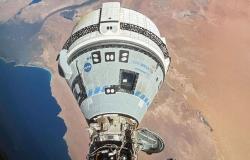The Starliner on top of the rocket that will launch it – NASA
In the most recent update of the authentic Venezuelan soap opera that is specifically the launch of the first manned mission of the Boeing Starliner and in general the history of this ship, the company and NASA have just announced that they will attempt the launch on Saturday June 1, 2024. At 18:25, Spanish peninsular time (UTC +2). There are backup launch windows on the 2nd, 5th, and 6th.
But – and it is a very important but – they are still working to finish analyzing all possible consequences of the small helium leak in the ship’s propulsion system that has been delaying its launch in recent weeks. It is necessary that all parties involved be convinced that they understand the problem and all its implications.
So there is one pending Flight Readiness Review incremental (FRR, Flight Readiness Review). It is a mandatory meeting before the launch of any mission in which all parties involved verify that everything possible has been done so that the mission can be carried out successfully. That includes both hardware such as ground systems, human equipment and any other factor that may intervene. There was already one at the end of April, so the next one will be incremental.
Then, following the usual procedures, you will have to spend again your Launch Readiness Review (LRR)the meeting in which it is decided that it has the go-ahead to be launched.
So I wouldn’t bet much on the day 1 launch not being postponed. Although with the history of the Starliner It’s almost a safe bet.
The goal of the Boeing Crew Flight Test (Boe CFT, or simply CFT) is to take Barry Wiltmore and Sunita Williams to the International Space Station (ISS). They will remain there for approximately a week before returning to land. The idea is go through all the phases of a manned mission but in less time. Meanwhile, they remain quarantined at the Kennedy Space Center (KSC) and take advantage of the extra time to continue training.
If the Starliner passes this mission successfully, and once the data obtained during it has been analyzed, it is possible that it will finally achieve the approval to enter regular service. Something that is not only of interest to NASA but also to its partners on the ISS, since the scheduling of manned missions to the Station depends on the entry into service of the Starliner. And that includes European astronaut Sophie Adenot.





